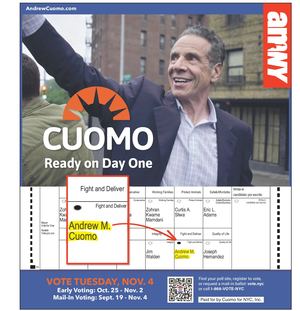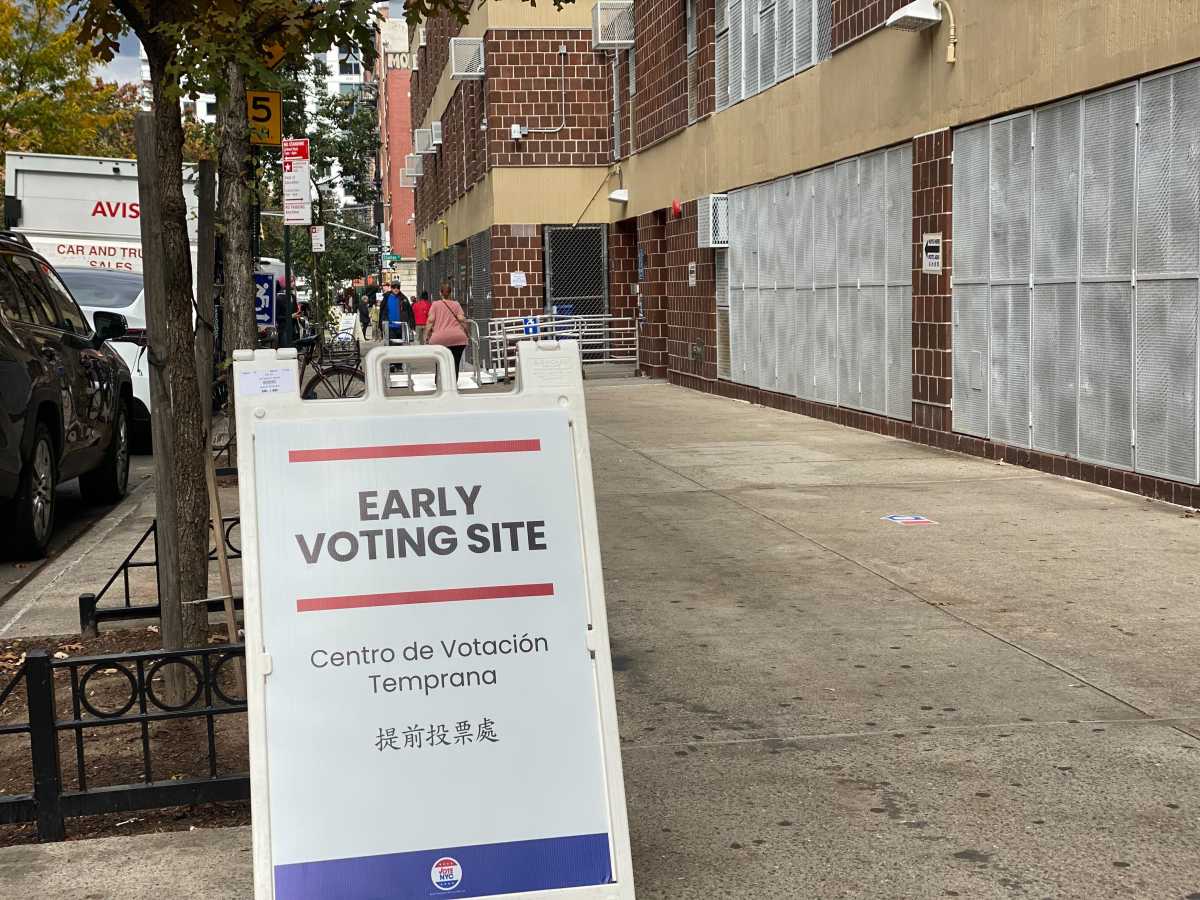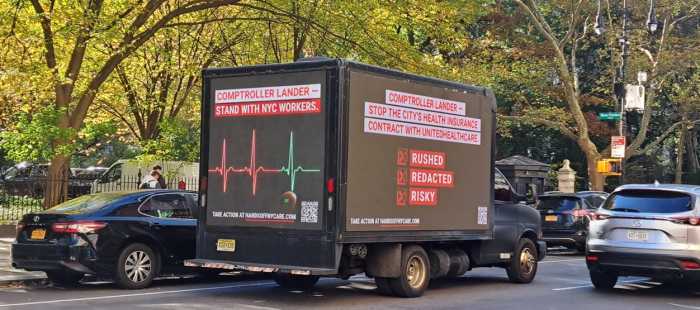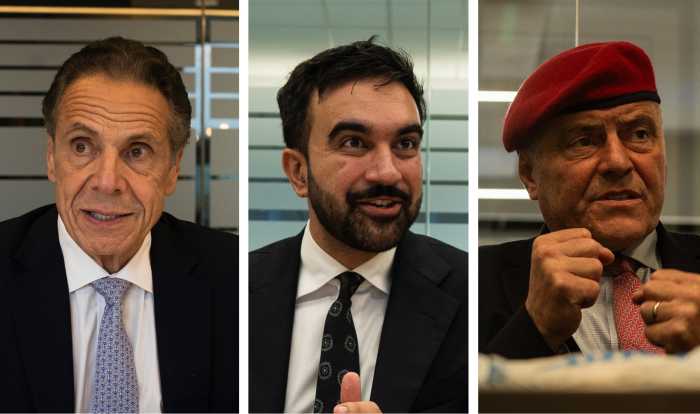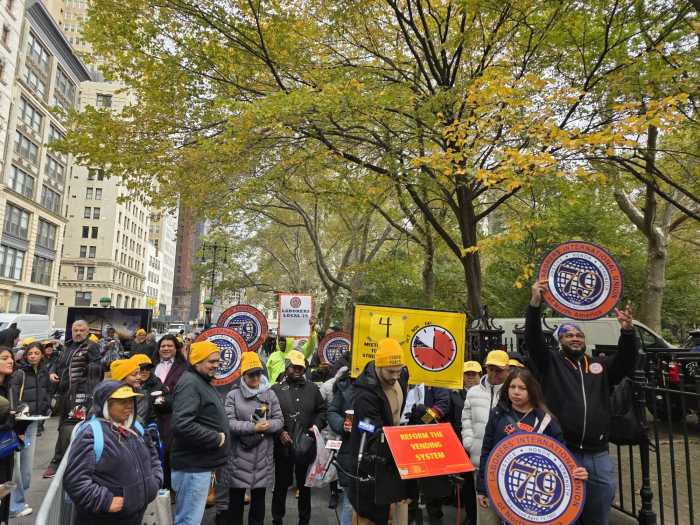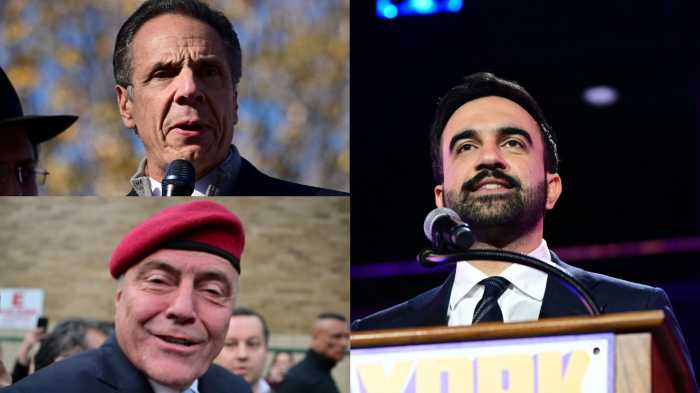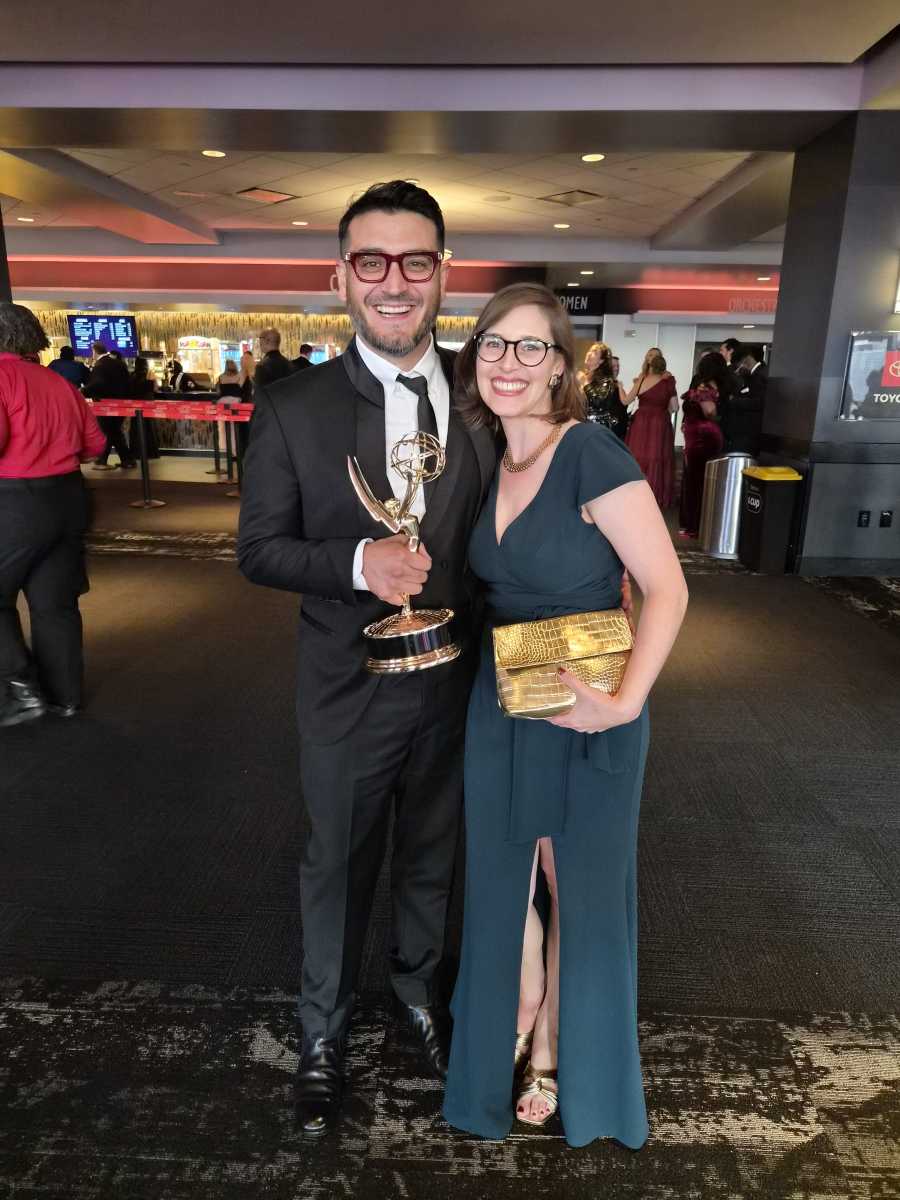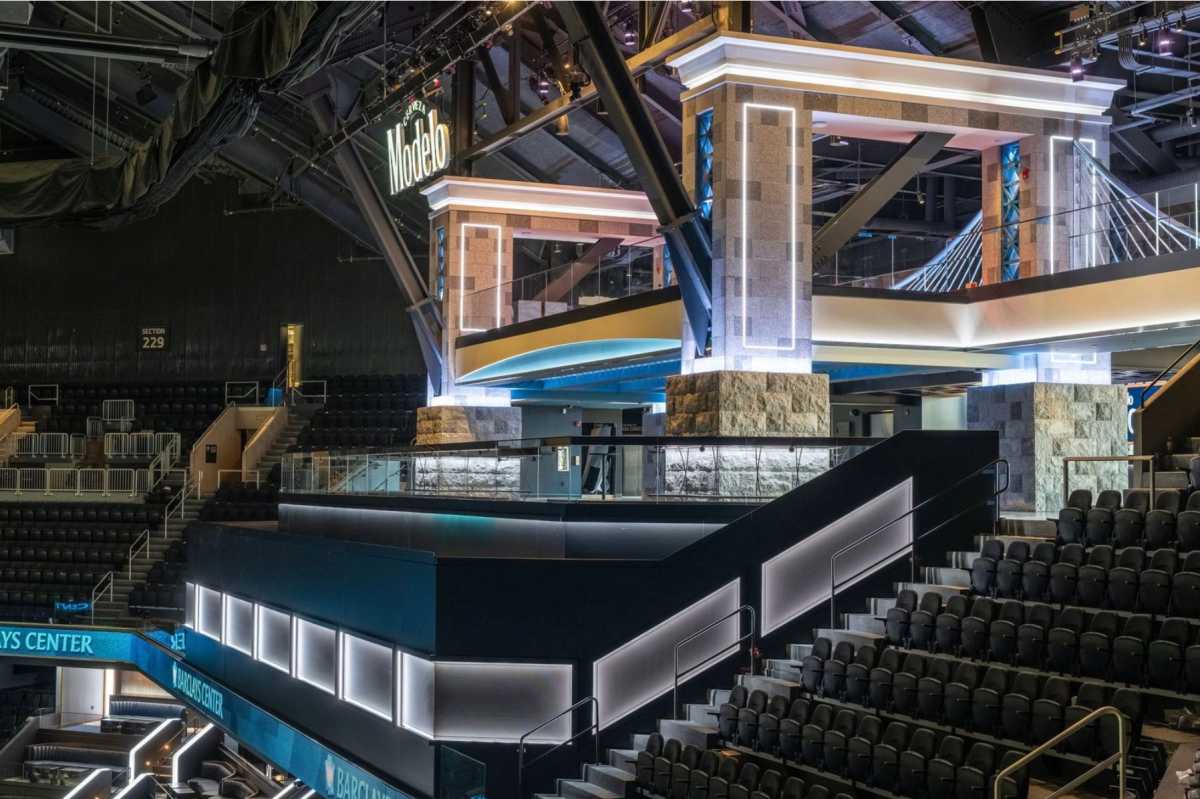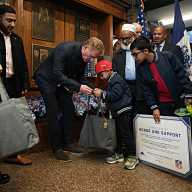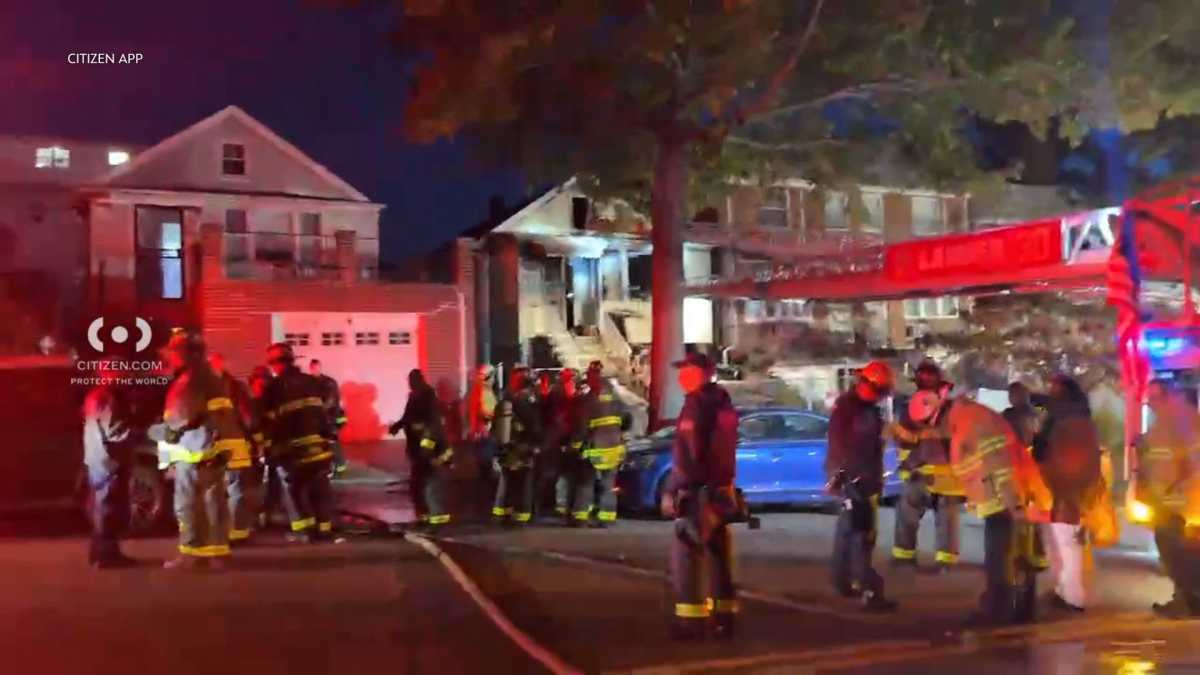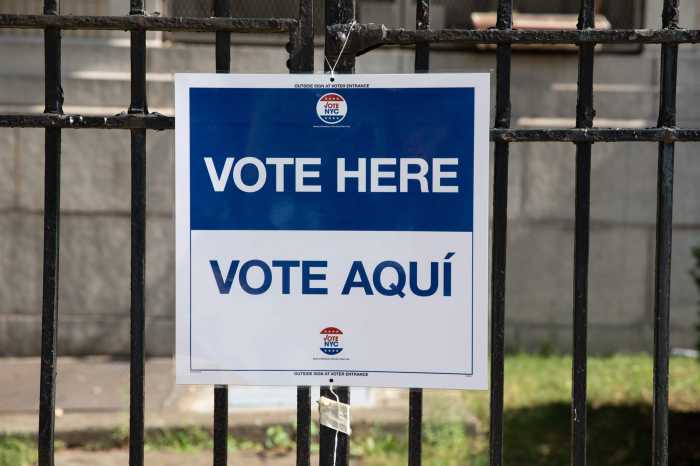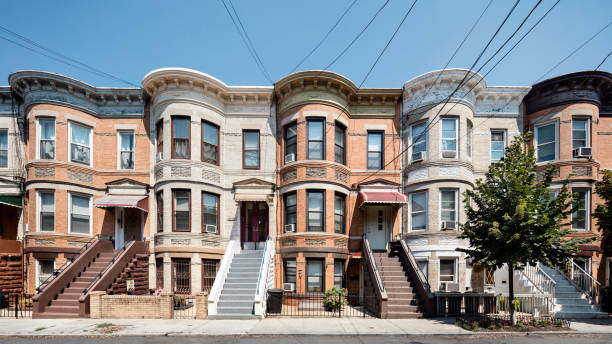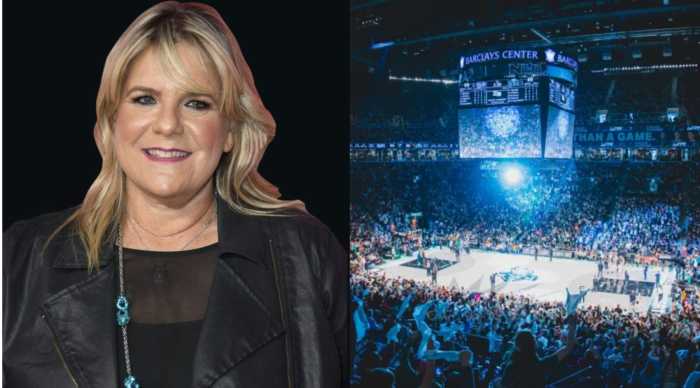As New Yorkers head to the polls throughout early voting this week and on the Nov. 4 general election, they will once again be asked to vote on six ballot questions.
Five of the measures appearing on voters’ ballots were advanced, with public input, by Mayor Eric Adams’ latest Charter Revision Commission. They relate to changing how the city approves housing developments and when local elections take place.
Three of those questions, Proposals 2 through 4, have sparked controversy between the Adams administration and the City Council.
The other question comes from the state government and involves allowing an Olympic sports facility on state park land in upstate Essex County.
Remember to flip your ballots when you vote; the questions will be on the back side. Here’s what you need to know about each of the questions.
Proposal 1: Allow an Olympic Sports Complex on State Forest Preserve Land
Question on Ballot: Allows skiing and related trail facilities on state forest preserve land. The site is 1,039 acres. Requires State to add 2,500 acres of new forest land in Adirondack Park.
Voting Yes: Authorizes new ski trails and related facilities in the Adirondack forest preserve.
Voting No: Does not authorize this use.
While Proposal 1 will not affect New York City, voters in the five boroughs, along with those across the state, are being asked to answer the question because it would amend the state Constitution.
The question focuses on the Mount Van Hoevenberg Winter Sports Complex in the Adirondack Mountains upstate, which was utilized in both the 1932 and 1980 Winter Olympics. The facility extends onto 30 acres of protected state park land, in violation of the state constitution.
The amendment would retroactively authorize the complex’s use of protected lands. The change would also allow for its expansion with new ski trails.
The state would have to add 2,500 acres of protected lands to make up for the loss of those given to the facility.
Proposal 2: Fast-Track Affordable Housing
Question on Ballot: Fast-track publicly financed affordable housing. Fast-track applications delivering affordable housing in the community districts that produce the least affordable housing, significantly reducing review time. Maintain Community Board review.
Voting Yes: Fast-tracks applications at the Board of Standards and Appeals or City Planning Commission.
Voting No: Leaves affordable housing subject to longer review and final decision at City Council.
Proposal 2, the first of three contentious housing-related proposals advanced by the mayor’s charter commission, seeks to quicken housing project timelines in two ways.
First, it would shorten the approval process for mixed-use developments in the 12 council districts that have produced the least housing over the past five years and shift final approval for those projects from the council to the City Planning Commission (CPC) — where the mayor appoints the majority of the members.
Second, it would empower a mayor-appointed Board of Standards and Appeals (BSA), rather than the council, to have direct approval power over affordable housing projects financed by the city, which would also be done with an expedited timetable.
Proponents of the measure argue that it would streamline the city’s lengthy seven-month land use process, while circumventing City Council members’ unofficial veto on projects in their districts — known as member deference. Some pols and pro-development groups have blamed member deference for stifling the pace of building at a time when new housing is desperately needed.
On the other hand, leaders in the City Council say the proposal shifts power away from officials elected by their communities to the mayor and removes members’ ability to negotiate directly with developers for better terms. They also charge that Questions 2-4 are misleading, given that the proposed changes would not significantly shorten the time it takes to get projects approved.
Proposal 3: Simplify Review of Modest Housing and Infrastructure Projects
Question on Ballot: Simplify review of modest amounts of additional housing and minor infrastructure projects, significantly reducing review time. Maintain Community Board review, with final decision by the City Planning Commission.
Voting Yes: Simplifies review for limited land-use changes, including modest housing and minor infrastructure projects.
Voting No: Leaves these changes subject to longer review, with final decision by City Council.
Proposal 3 is designed to simplify the review of “modest” housing and infrastructure projects by cutting their review time from seven to roughly three months. It would apply to projects that increase residential capacity by up to 30% from current levels or those up to 45 feet tall.
The relevant projects would require approval by the CPC rather than the council.
The city’s legislature has leveled a similar argument against Proposal 3 as the previous one. They also contend that the shortened timeline is misleading because the council’s 65-day review period only represents a small part of the overall land use process.
Proposal 4: Establish an Affordable Housing Appeals Board
Question on Ballot: Establish an Affordable Housing Appeals Board with the Council Speaker, local Borough President, and Mayor to review Council actions that reject or change applications creating affordable housing.
Voting Yes: Creates the three-member Affordable Housing Appeals Board to reflect Council, borough, and citywide perspectives.
Voting No: Leaves affordable housing subject to the Mayor’s veto and final decision by City Council.
Proposal 4 would establish a “Land Use Appeals Board” with the authority to override council votes to reject or alter developments. The board would consist of the mayor, council speaker, and borough president of the borough in which the project is located.
The panel appears designed to serve as another check on member deference — creating a process to prevent one council member from blocking a project from moving forward.
The council has railed against this change in particular, as it gives developers the ability to negotiate directly with the mayor and borough president, thereby cutting out the local member.
Proposal 5: Create a Digital City Map
Question on Ballot: Consolidate borough map office and address assignment functions, and create one digital City Map at the Department of City Planning. Today, the City Map consists of paper maps across five offices.
Voting Yes: Creates a consolidated, digital City Map.
Voting No: Leaves in place five separate map and address assignment functions, administered by Borough President Offices.
Proposal 5 requires the Department of City Planning (DCP) to digitize the City Map, which legally defines street names, widths, and lines.
Currently, the City Map consists of 8,000 pages of paper maps maintained by the offices of each of the five borough presidents. The measure would see DCP consolidate those documents into one centralized and digitized map.
Unlike proposals 2-4, proposal 5 has seen little controversy.
Proposal 6: Move Local Elections to Presidential Election Years
Question on Ballot: Move the City’s primary and general election dates so that City elections are held in the same year as Federal Presidential elections, when permitted by state law.
Voting Yes: Moves City elections to the same year as Federal Presidential Elections, when permitted by state law.
Voting No: Leaves laws unchanged.
Proposal 6 would move city elections from odd to even-numbered years in a bid to increase voter turnout for local contests. Specifically, it would shift them to presidential election years.
Currently, city elections for offices including mayor, comptroller, public advocate, and City Council member take place every four years, with the next election scheduled for 2029. That means they are held the year after every presidential election year, such as 2024 and 2028.
Proponents of the measure say it would increase voter turnout, which is typically far higher in presidential election years, for local races. Furthermore, they argue it would save taxpayer funds because the city would not need to hold as many elections.
On the other hand, detractors charge that the change could lead to longer ballots that confuse voters. They also worry local races would be overshadowed by state and national contests.
